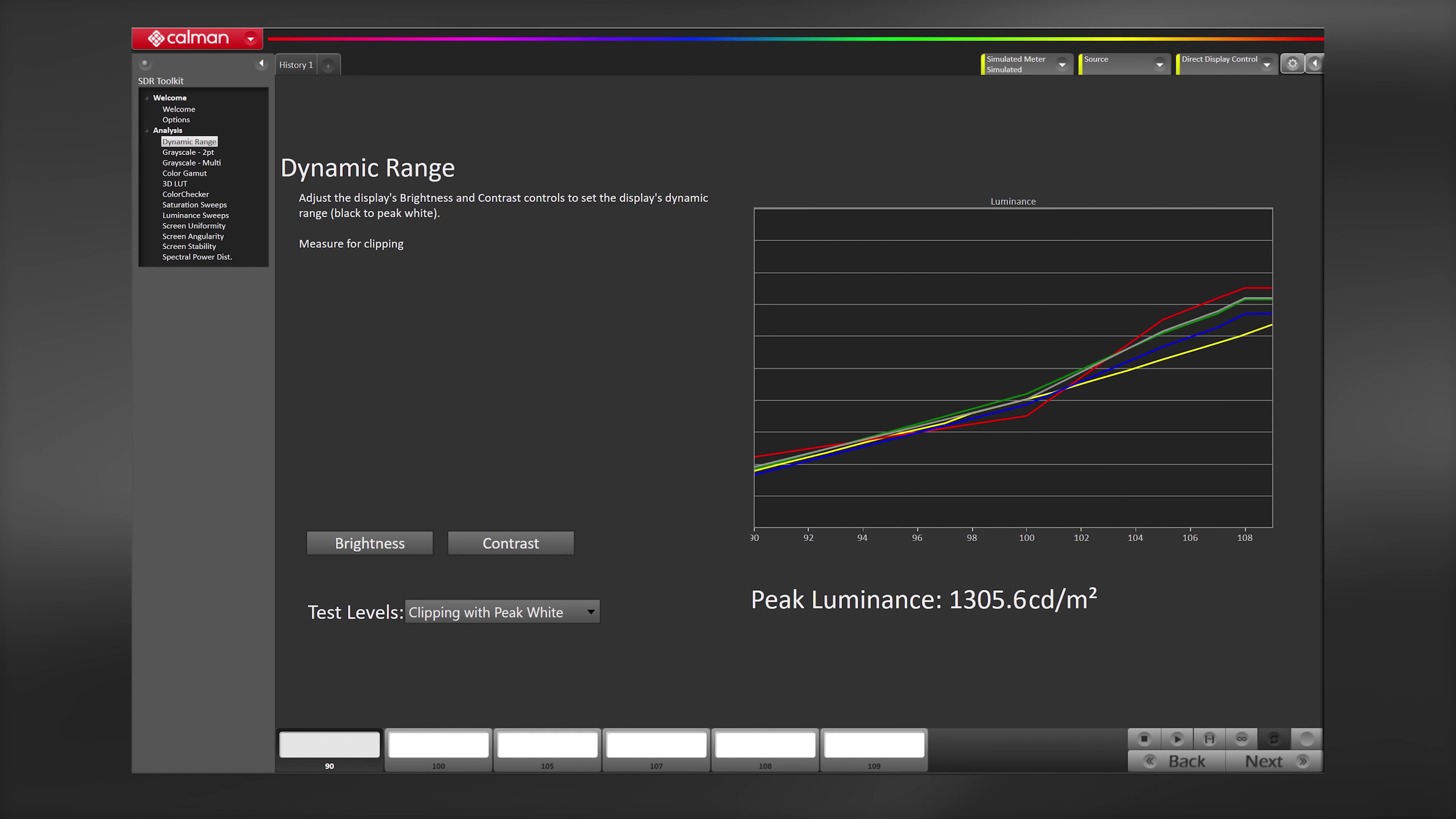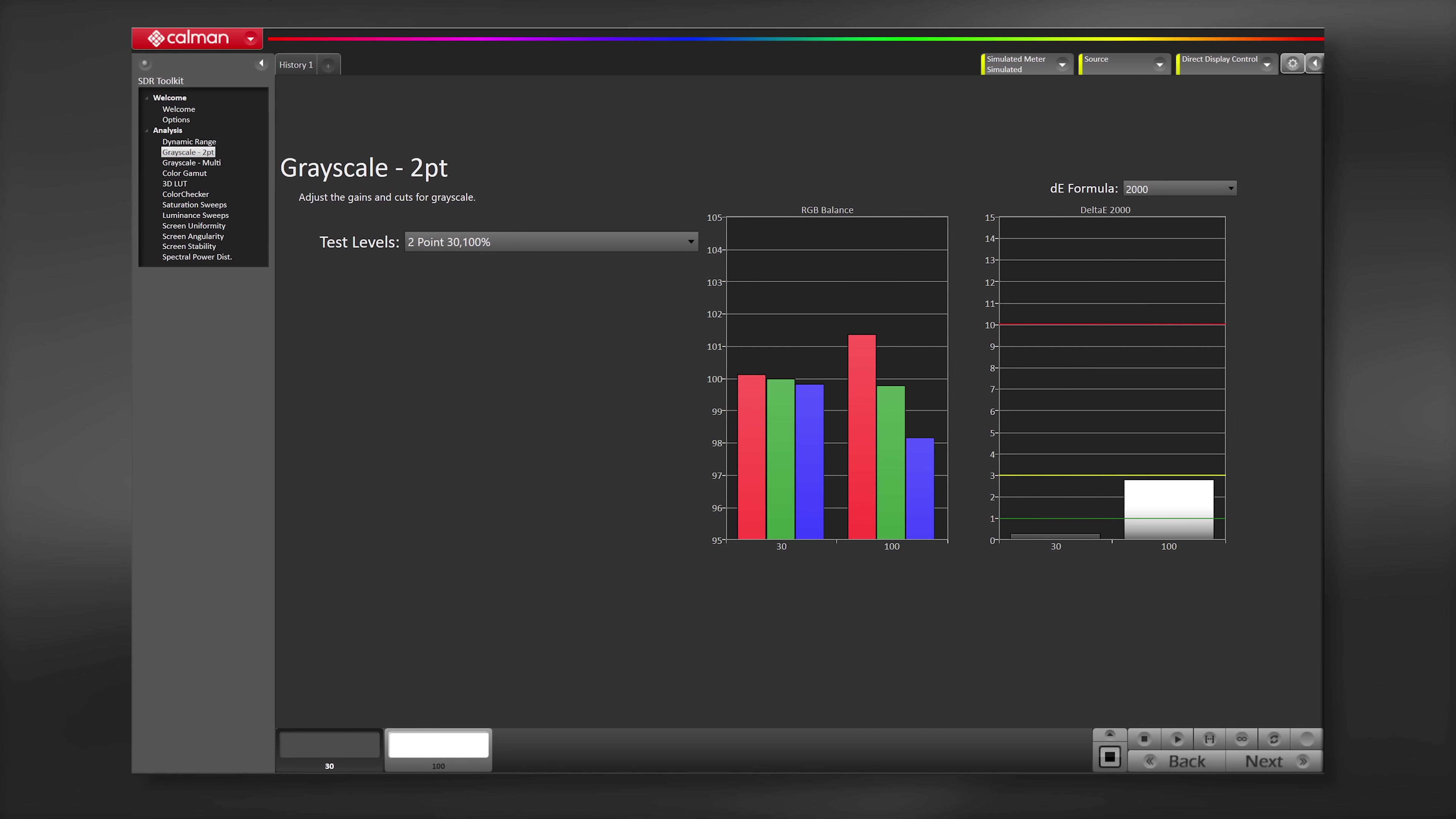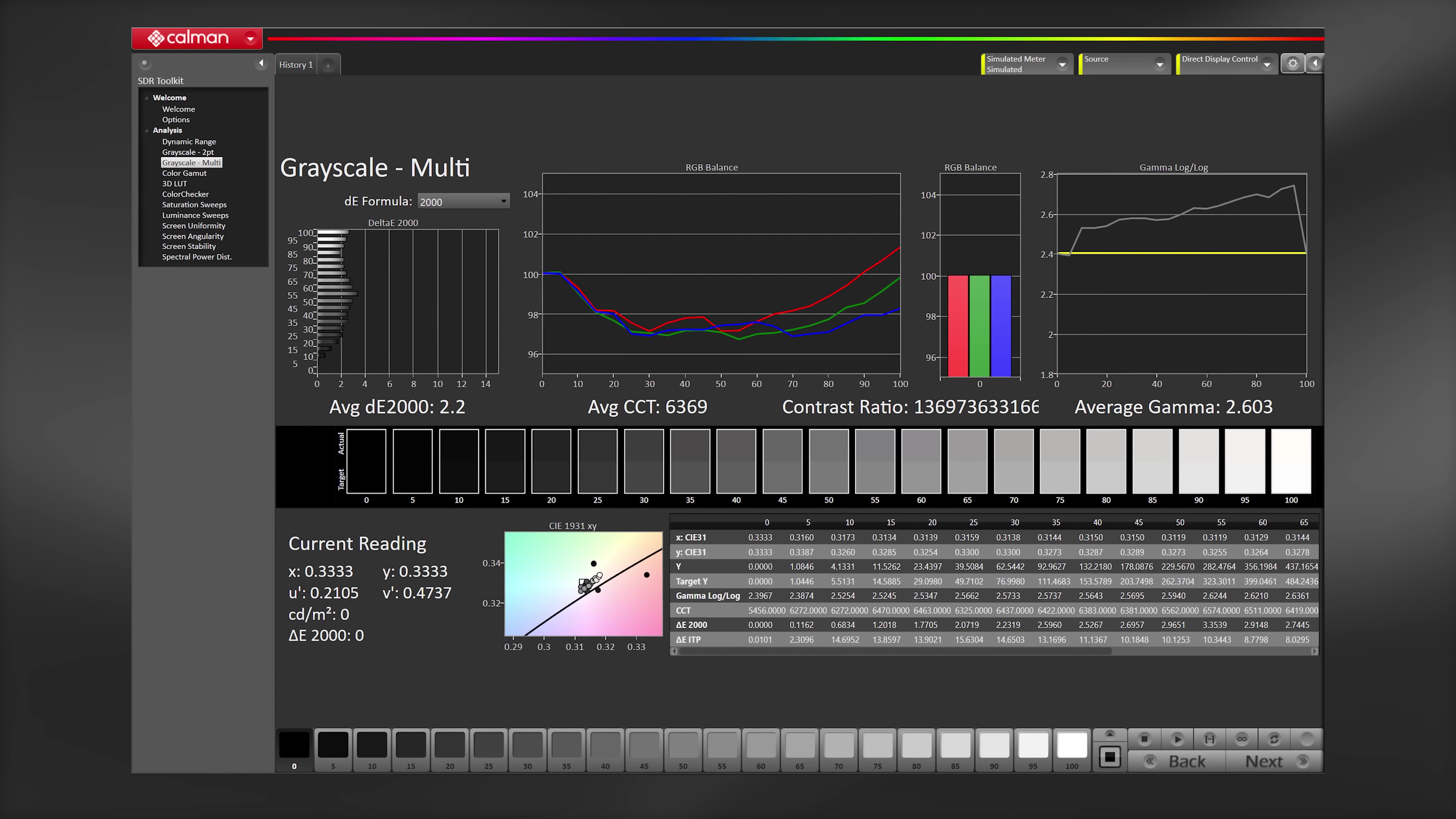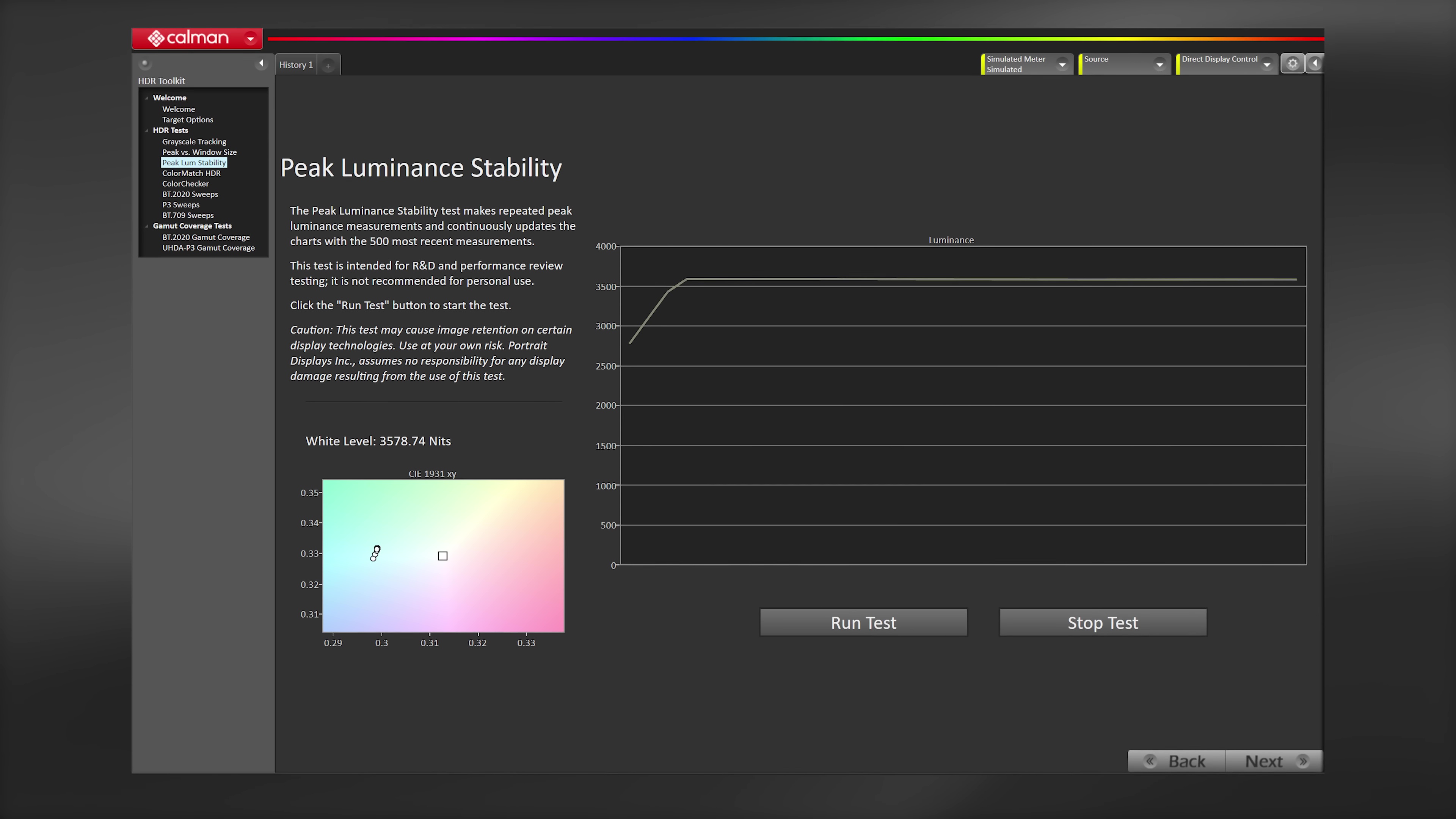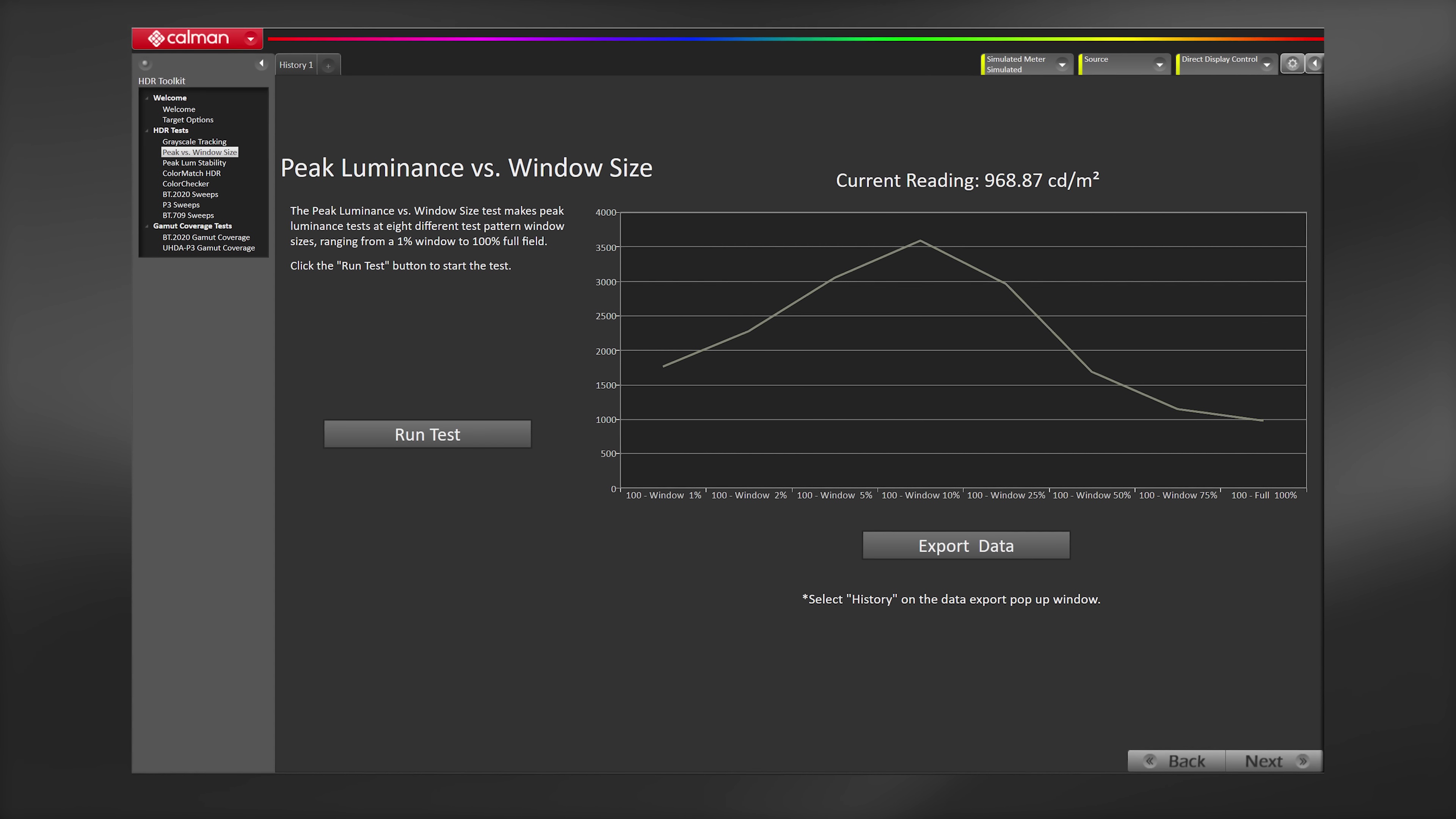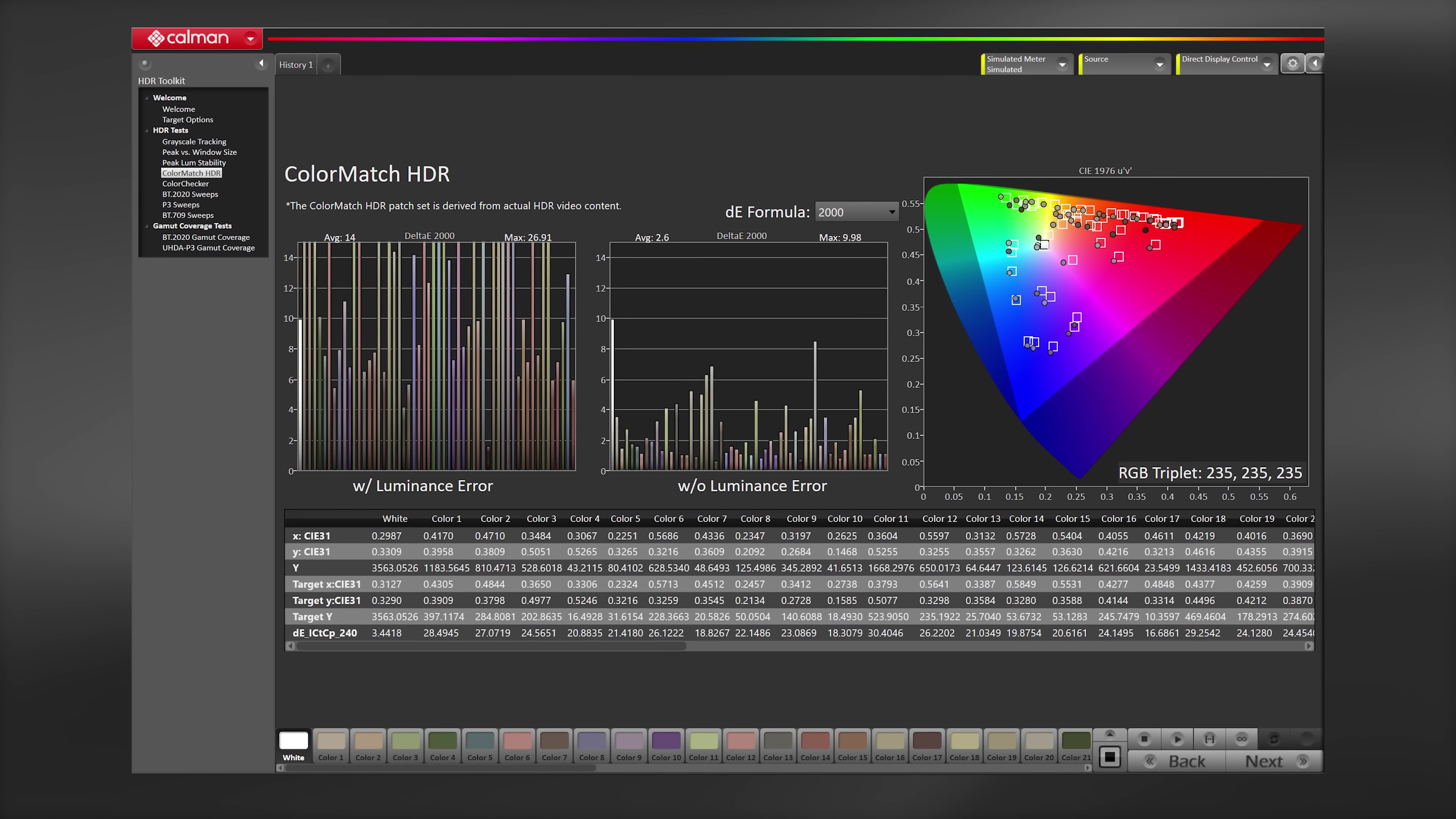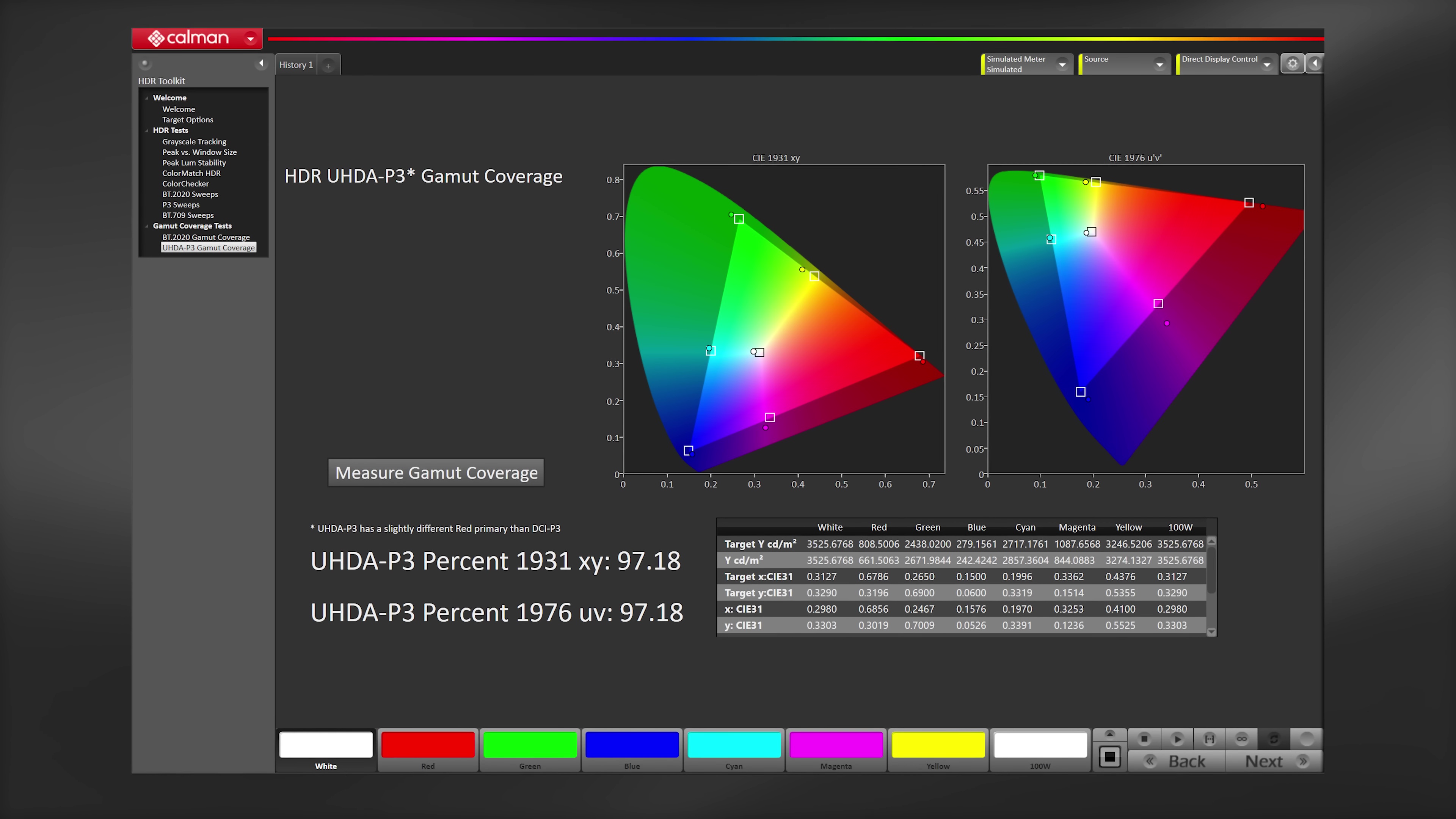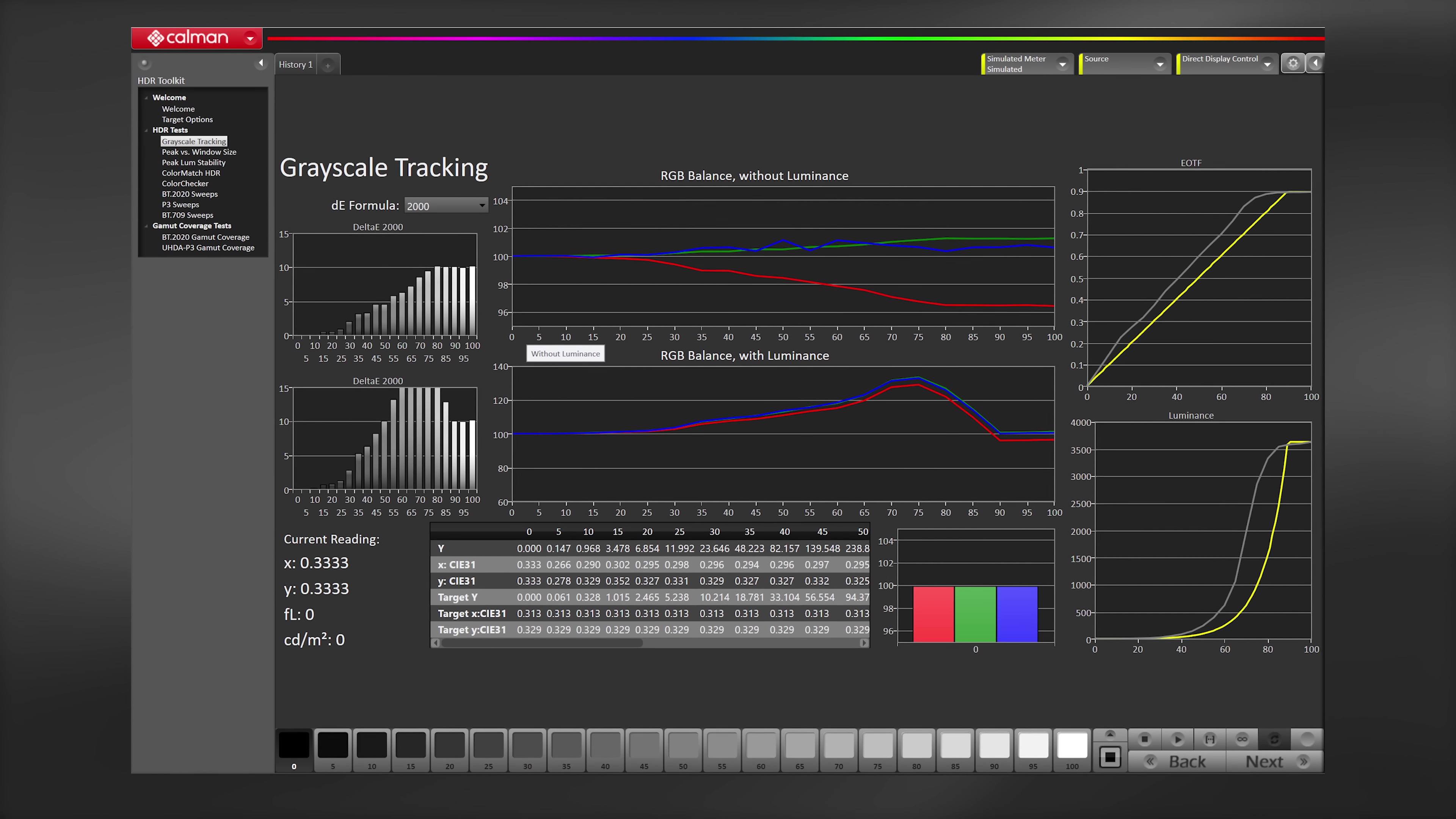“The Hisense U8N is one of the best TVs of the year — especially if you don't want to pay OLED prices.”
- Intense brightness
- Deep blacks/contrast
- Vibrant, accurate color
- Great sound
- Overly bright HDR
- Poor off-angle viewing
“Dangerously close to OLED.” It’s a phrase TV geeks love to hear when talking about mini-LED TVs — especially when they cost far less than an OLED TV. And it’s a phrase I suspect we’ll hear in regard to a variety of 2024 TVs, including the Hisense U8N.
Before I dig into the Hisense U8N, I want to tell you about a little change in strategy I’m implementing for this review.
We’re still going to have a “Nit Nerds” section of this review in which I dive into metrics, measurements, and deeper TV enthusiast type stuff. That won’t change. But I am going to reserve some of the super-deep, nitty-gritty stuff for a future comparison. A lot of that really in-depth stuff is more meaningful in the context of a comparison to another TV. So, if you are one of my Nit Nerd family, and you find that there’s more you want to know about this TV after you’ve read this whole review? Worry not! It will be covered in a future piece.
Ok, now let’s talk about the Hisense U8N.
Video review
Premium, on a budget
For those who don’t follow TVs closely, the Hisense U8 series has been something of a hit for TV enthusiasts on a budget over the past few years. It has reliably offered picture quality that punches so high that it calls into question how other brands price their TVs. Several folks who bought the U8 series on my recommendation have told me they feel like they stole something because the price-to-picture performance ratio is off the charts.
The Hisense U8N continues that legacy. In some ways, it does get mighty close to OLED. In other ways, it does not. Regardless, the Hisense U8N is a hype-worthy TV that deserves your consideration.
Televisions are about more than just picture quality, though. Even though it is a great deal, the U8N is still a long-term investment that costs a serious chunk of change. You’re likely to interact with this set a lot, and I suspect you want to enjoy owning this TV.
Advanced mini-LED, easy interface
With that in mind, let’s start with what this TV is: a mini-LED backlit, quantum dot-infused LCD TV. Hisense calls it ULED, but it competes directly with QLED TVs marketed by other brands. The mini-LEDs in the U8N are densely packed and broken down into thousands of individual dimming zones in an effort to deliver both high brightness and deep black levels, which combine for awesome contrast. The quantum dots help expand the number of colors the TV can produce AND they help make for brighter colors, too.

The U8N runs on the Google TV platform, which means that just about every streaming app you might want is available. Navigating the TV is intuitive and easy, and Google TV makes it easy to pick up where you left off on shows or movies you watch across a wide array of apps (YouTube and YouTube TV are especially well-integrated since those are Google properties). You have access to Google Assistant for voice search and information, and for that, you can either use the remote or enable a built-in, always-listening microphone for hands-free
You get a full-size remote that has just the right amount of buttons, including a dedicated settings button, an input selector button, and buttons for volume, channel control, play/pause, and the menu. There’s even a profile hotkey that lets family members switch to their own

The U8N supports HDR 10,
In short, the Hisense U8N is a full-featured TV with all the bells and whistles you should expect from a TV at this level.
Quick, snappy, and fast
I am pleased to report that the U8N is a snappy and responsive TV. As I clicked through available apps and tiles, I experienced no noticeable lag, no matter how impatiently I click around, which is a big deal to me. I hate waiting for a TV to catch up to my clicks. Apps load quickly, too — there’s nothing funky or unexpected. It’s just a super-easy to use TV.
When you turn the volume all the way down, you’re stuck with this mute icon.
I did find one user-interface quirk. It’s a little thing, but it stuck in my craw. When you turn the volume all the way down, you’re stuck with this mute icon as if you’ve pressed the mute button on the TV. There’s no way to get rid of this if your volume is at zero. Fortunately, after reporting this annoyance to Hisense, I was told it will be addressed in a forthcoming update.

One more quirk: While the TV does pop up a
Fit, finish, and sound quality
In our Hisense U8N unboxing video, I showed you how the pedestal-style stand can be placed at two heights. There’s a raised option if you’re using a soundbar, and a lower option for a sleeker look. And I showed you the stability and the cable management. I also pointed out the subwoofer drivers on the back of the TV. But how does it all sound?
The TV sounds great. Admittedly, the bar for built-in TV speaker sound is set pretty low, but the U8N really does sound better than most TVs on the market. The depth and the presence of the bass rivals some of the subwoofers you find in inexpensive soundbar systems. In some ways, it’s actually better bass because it is so well integrated with the TV’s down-firing speakers. I haven’t tested the sound with the TV mounted on a wall. But on a stand, it sounds far better than I think any of you will be expecting. So if you get this TV, be prepared for a pleasant surprise when you crank up your favorite music video or movie.

The TV also does well at delivering clear dialogue, but don’t expect much in the way of surround effects or stereo separation. Still, the TV, on the whole, has a big, robust sound that will not have you racing back to the store for a soundbar because the built-in sound is so terrible.
Nit Nerds, activate!
To test the Hisense U8N, I used a SpectraCal C6 profiled to an X-Rite i1Pro 2 using Calman Ultimate by Portrait Displays. I started measuring by using the default settings in the Filmmaker Mode picture preset. And that little detail right there is super important.
When I tested the U8N, the default Filmmaker Mode preset — typically a very purist-oriented, accurate picture mode — had the TV’s automatic light sensor turned on, with Auto White Balance also turned on. From a purist’s perspective, this is not good (at least, I think that is the perception). But for most folks, I actually think this could be a good idea. One of the chief complaints about Filmmaker Mode is that it is often too dark, or that it lacks vibrancy. That’s because Filmmaker Mode is designed to look right if you are viewing the TV in a pitch-black room, and most folks simply don’t do that.

Hisense may choose to alter this aspect of its implementation of Filmmaker Mode, and if it does, I’ll update this review. But for now, I’ll add that while I do like the idea that a user can select Filmmaker Mode on the U8N and not be doomed to an overly dark picture, I think that kind of interpretation of a picture mode preset could be best left to the TV’s Theater Day and Theater Night modes. Call me a purist, but Filmmaker Mode was created by purists, for purists. So why not leave it be?
The other important thing to know is that, while the Warm 1 color temperature setting used by default in Filmmaker Mode is quite accurate in most respects, the Warm 2 color temp setting is not. I’ve always felt it odd that Hisense would make Warm 2 — which is usually a warmer color temp setting on other brands — the cooler of the two options. And the blue channel on the H8N is very aggressive in the two-point white balance. This results in very vibrant, very cool, very crisp whites and grays, and it appears to the eyes to be brighter. But, from an accuracy standpoint, it doesn’t feel like this is what you should be getting in the Filmmaker mode preset. (Editor’s note: Hisense informed me that yet another future update may reverse this setting so that Warm 1 is slightly cooler than Warm 2.)

Warm 1 being accurate and Warm 2 being inaccurate is true across the Theater Day and Theater Night settings as well. So, if you want accurate white balance and more accurate colors, the Warm 1 color temp setting is your friend.
Here come the measurements. In SDR, the default Filmmaker mode setting puts the local dimming and and peak brightness settings at high (which, again, seems to buck the intention of Filmmaker Mode). With those default settings, peak brightness in SDR measured at over 1,300 nits for a 10% window.
Two-point white balance came in looking awesome, with delta errors of less than 3 for both the 30% and 100% stimulus measurements. That is great. And as we tracked the grayscale, errors stayed below the visible threshold on my sample.
Color accuracy in SDR was also very good. We see some minor errors in Blue and Cyan, but nothing to get worked up over considering this is a stock picture mode setting without calibration.
As for
The white balance in
This TV delivers a lot of wow factor and visual impact.
Color accuracy was very respectable in
The EOTF tracking (that’s electro-optical transfer function) is pretty hot. There’s no getting around it: This TVis overly bright in

But from a measurements perspective, I think the
Resume normal review
If you’re just rejoining us after skipping the Nit Nerds section: The key takeaways are that the Hisense U8N is capable of being a very accurate TV in SDR, but it likes to get a bit spirited with the brightness in

It’s hard not to simply love watching this TV. Anything in
And I’m thrilled to report that lower-resolution cable and satellite TV also look outstanding! Lesser TVs will really show a lot of color banding and blockiness on lower-quality programming, but the U8N appears to be doing a pretty impressive job of cleaning it up. In most meaningful respects, the U8N is a step up from 2023’s U8K.
The U8N does seem to have an Achilles’ heel in its processing, though, and that’s Moiré. It can struggle with super-fine line patterns, like you might see in a plaid jacket. It shows less with higher-resolution content, but it does demonstrate that there is still a little room for improvement in Hisense’s image processing. For context, though, consider we are now in torture test territory, where most TVs will fall apart. It’s just a question of to what degree they fall apart. Still, the U8N’s color, contrast, vibrancy all look outstanding.

As for motion, Hisense has a film motion setting that does a solid job of reducing judder in 24 frames-per-second (fps) content. I’ve had no issue watching movies on this TV. Fast-motion sports looked solid. Where the image fell apart was in large blocks of color during superfast motion. You could see some blur and blocking creeping in because the signal’s bit rate wasn’t keeping up with the demands of the content. This is nearly impossible for a TV to clean up, so I can’t penalize the U8N for this. I will say, though, that you can engage the motion-smoothing tech in this TV. And while it will bring in motion-smoothing artifacts, you can get smoother-looking sports that way — I think folks will appreciate that.
I’m not a hardcore gamer, and I prefer to leave gaming commentary to others. But I did some casual gaming, and both SDR and
Nearly as good as OLED?
The Hisense U8N isn’t an OLED television, though it does get dangerously close in some key ways. I had the LG G4 OLED TV set up beneath the U8N for a portion of my evaluation and did some direct comparisons. The U8N’s backlight control so far has been nothing short of outstanding. I was a little concerned with all the zones it was trying to manage that it might get sluggish, but it hasn’t been. Any lag has been undetectable. The black levels are superb, and the low-luminance performance has been surprisingly good. I haven’t gotten to the torture tests just yet, but I am very optimistic that the U8N will hold its own against the competition — even against TVs costing much more. Because, in the end, the most meaningful aspects of picture quality to most viewers — the contrast, color saturation, blooming and halo control — are, at this price, borderline unbelievable.

If you’d never owned an OLED TV before, the U8N could fool you into believing it was one — save for two factors.
First is the overly brightened of
The U8N has a pretty tight optimal viewing window due to its VA-type LCD panel. You really need to sit smack-dab in front of it to get all the rich, deep goodness it can offer. When you step or sit too far off to the side, color saturation and contrast plummets precipitously. Hisense gets some redemption points for not producing egregious amounts of backlight bleed, which I attribute to the dense mini-LED system and high dimming zone count. But there’s no getting around the fact that where OLED holds up well at extreme angles, the U8N can’t quite keep up.

For TV enthusiasts, this comes as no surprise. But as far as mini-LED TVs go? I swear the U8N is one of the most OLED-like TV I’ve tested to date in terms of black levels and overall contrast. It’s a truly remarkable TV.
Is it still a budget videophile’s dream? I’m going to reserve judgement until Hisense is done making the aforementioned updates, but there’s no doubt it has the potential — the hardware is there, but the software just needs to catch up. I do wish that a few measurements were a bit more exacting. But if I take off my nerd hat and just speak to the world about this TV? It’s freaking awesome to behold. It’s easily one of the best buys of 2024. Maybe even the best buy of the year.






